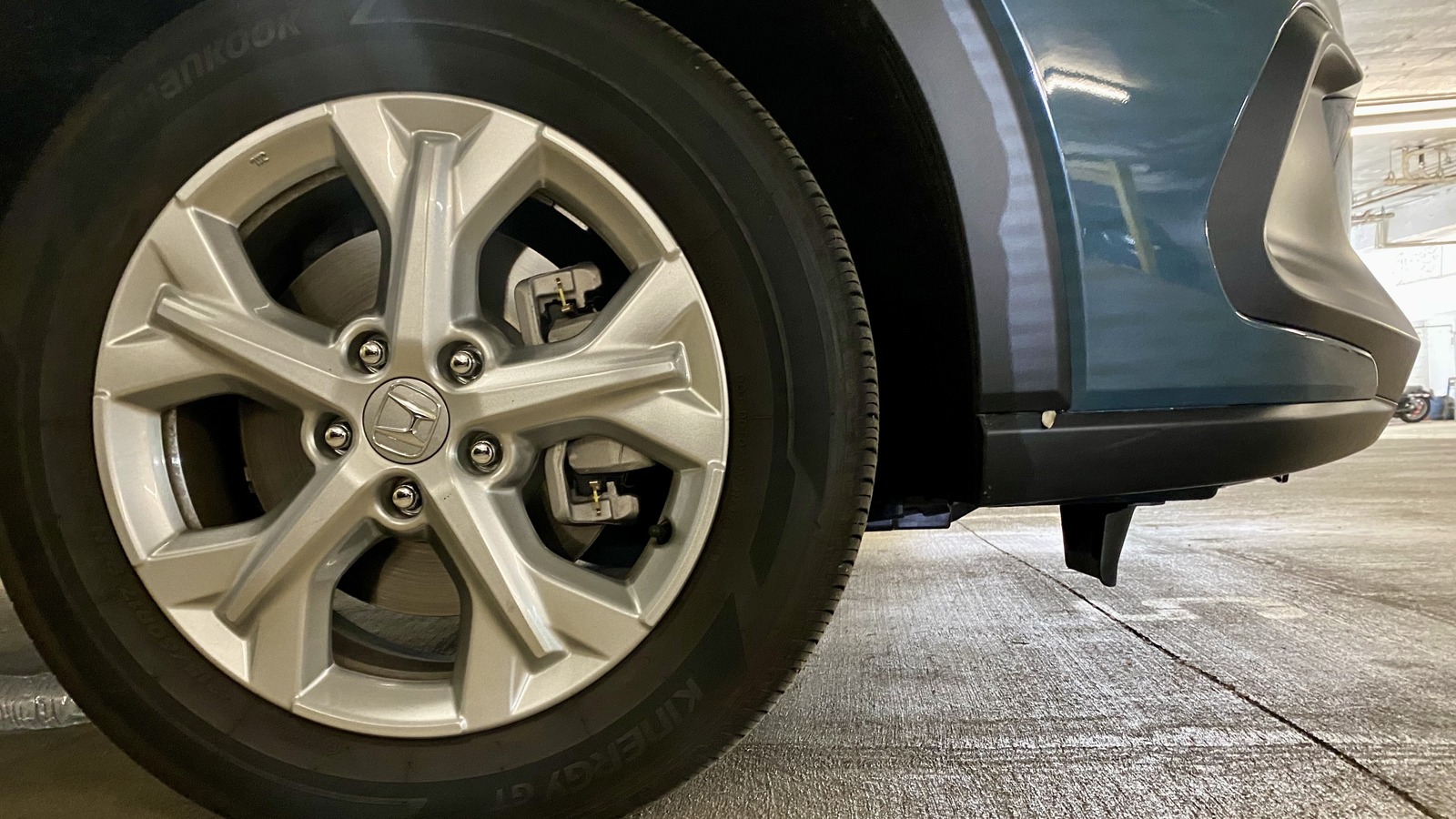Cars are very complicated machines that people interact with on a daily basis without fully understanding. Thousands upon thousands of hours of research, development, engineering, and testing go into virtually every part of a modern car. As emissions regulations continue to strengthen and the fuel economy expectations of car buyers increase, more of those research hours are dedicated to developing more aerodynamically advanced and efficient cars.
If there is a detail on the exterior of a modern car, it is likely there for a very important reason, which leads us to a commonly asked question: Why the heck is there a random plastic flap that sticks out in front of my car’s front wheels? First, let’s put a name to their face. Those little random plastic flaps in front of your car’s front wheels are called spats.
You know that whooshing sound you hear when you’re driving on the freeway? That’s wind noise, and you hear it because your car is piercing through the air at 65 miles per hour or however fast you happen to be going. You’ll often hear the term aerodynamics tossed around when nerds are talking about cars, and that’s because it is the qualities of an object that affect how easily it is able to move through the air.
Spats exist to deflect the air
Have you ever noticed how sports cars and race cars are really low to the ground? That’s to minimize their susceptibility to aerodynamic resistance, making it easier for them to go faster. The spats in front of your front wheels are there for similar aerodynamic reasons.
As you’re driving, these little wheel spats block fast-moving air from hitting the wide, flat surface of your tire’s tread, redirecting the air to both decrease aerodynamic drag and increase aerodynamic efficiency. Their aerodynamic benefits also help prevent the front of your car from lifting up at higher speeds, maximizing your ability to maintain control of your vehicle. Some cars use these wheel spats or under-body fins to not only redirect that air away from the tire, but also to direct it onto your brakes to keep them cool and working at maximum capacity.
When these flaps are behind the wheels, they’re likely there to prevent the tires from flicking up road debris like mud or rocks. When they’re in front of the tires, it’s to maximize aerodynamic efficiency. The more aerodynamically efficient a car is, the less fuel, whether gas or electricity, it takes to move the car. Aerodynamically optimized designs are a good thing; they increase efficiency, decrease wind noise at speeds, and allow for vehicles to achieve higher maximum speeds without losing control.




